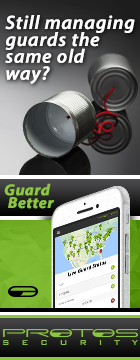|
The Threat of
Violence Remains All Too Real for Fast-Food Workers

At least once a week, a viral video or news story
will emerge about a fast-food employee being attacked, often with a
tabloid-ready headline: On August 14, in Murfreesboro, Tennessee, a
“McDonald’s customer hurled CDs, slushie at employee because her order was
wrong.” Two days later, a paper in Bradenton, Florida, reported
“Customer didn’t get his filet-o-fish so he ‘pitched a fit’ at McDonalds.”
On August 17, in Oklahoma City, a Taco Bell employee was
shot by a customer at a drive-thru window.
The last few weeks have seen a flurry of
attention around fast-food chains, including the Fight for $15’s minimum-wage
bill being
quashed in the Senate. Amid the fight for higher wages and protections
against harassment and abuse, the threat of violence to employees remains
overlooked by customers and corporations alike.
Earlier this year, the nonprofit
National Employment Law Project released a report titled
“Behind the Arches: How McDonald’s Fails to Protect Workers From Workplace
Violence.” It began with a series of horrifying stories: the drive-thru
customer in South Carolina who threw hot coffee at a 16-year-old employee over
the wait for an order of fries; the customer in Florida who reached across the
counter and grabbed a worker because there were no straws at the condiment
station; the customer in Arizona who threatened an employee with a shotgun over
a missing packet of hot sauce. These incidents all happened within the span of a
few weeks in January this year.

Looking at three years of news coverage, NELP researchers found 721 instances of
violence against McDonald’s employees at work. Widening the lens beyond what
made the news, a single store in Chicago had nearly double that: 1,356 calls
made to 911 over a three-year period.
NELP focused its report on McDonald’s partially because it has the longest hours
of national competitors. About 40 percent of McDonald’s locations are open 24
hours (compared to 6 percent of Burger King stores, and one percent of Wendy’s
and Taco Bell locations). “Also, they’re the largest fast-food company in the
world. So it just seemed to us that they really could do something to prevent
workplace violence,” says Deborah Berkowitz, the worker health and safety
program director at NELP.
McDonald’s is hardly alone, however. In the past month alone, a customer
flashed a knife at an employee at a Burger King in the Bronx; a drunk woman
reached into the drive-thru window at a Taco Bell in Oregon and
poured liquor down an employee’s throat; and at a Popeyes in Philadelphia
(something of a fast-food darling at the moment, thanks to
that chicken sandwich) armed robbers
forced employees to the ground.
In all, fast-food workers face a number of factors that the
Occupational Safety and Health
Administration and the
National Institute
for Occupational Safety and Health link with the risk of violence at work.
They include “direct contact with the public, exchange of money, working alone
or in small numbers, working late at night or during early morning hours.”
Earlier in her career, Berkowitz worked with Giant and Safeway stories as a
health and safety director for the AFL-CIO, the country’s largest federation of
unions. “All the workers had some training about what to do if a customer points
a gun at you,” she says. “McDonald’s workers get nothing. And I think that’s
because of the fast-food industry, they really think of these workers as
expendable.”
Even after the NELP report was released in May, McDonald’s didn’t step in,
instead opting to put the onus for safety training on franchise owners,
Berkowitz says. (Grub Street has reached out to McDonald’s and will update this
post if we hear back.) Meanwhile, Berkowitz knows that for fast-food workers who
support families, speaking up can feel risky, but points to an example at a
Chicago McDonald’s that harnessed power in numbers. After three serious
instances of workplace violence in less than six months, workers banded
together, filed a complaint with OSHA, and hosted a press conference as a group,
“to protect one another and make sure they wouldn’t be fired,” Berkowitz says.
When the franchise owner tried to tell OSHA that the store had a security guard,
the workers called out the lie. “They were amazing,” Berkowitz says. “They went
back and forth with OSHA saying there’s no security guard here.” Today, the
store has a guard.
Still, Berkowitz knows that more could have been done. “I’m disappointed that
OSHA didn’t involve McDonald’s corporate, hold their feet to the fire,” she
says. “So this one store may have a protection, but then there are other stores
with other instances.” Beyond training workers, she adds, “there needs to be a
button that sounds an alarm, or calls the police immediately. These things have
to happen.”
Editor's Note: The writers statement that "the threat of violence to
employees remains overlooked by customers and corporations alike," is certainly
overstated and uninformed. It's hard to believe that any customer in today's
world is not aware of the dangers posed at any retailer or public area. And as
our annual
'Retail Fatalities Report' has shown for years, the convenience store and
gas station retailers regretfully have posted the highest fatality rates of any
retailer due to their payroll restrictions and having only one employee on duty
between 8 pm and 4 am, the highest fatality period. And a number of city's have
passed or have tried to pass laws in response to that specifically.
But this writer is calling out an industry concern which warrants discussion.
Especially with the rising violence trends. Just a thought. -Gus Downing
Article originally published on
grubstreet.com
|





